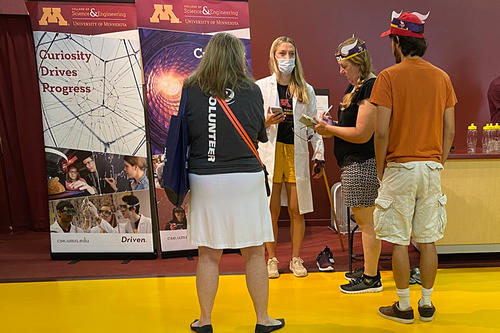
Any hockey player can appreciate footwear that offers good balance under taxing conditions. But not many go on to engineer footwear to detect—and perhaps diagnose—balance problems.
Enter Cara Herbers, a 2019 mechanical engineering graduate of the College of Science and Engineering and four-year Gopher hockey player. But she’s not looking to design better hockey skates; instead, the now-graduate student has set her sights on easy-to-use shoe implants that can assess problems with balance, specifically in Parkinson’s disease patients. While such problems are common in aging, in Parkinson’s disease they show up in a unique, hard-to-manage way, she says.
Herbers came to the U of M to pursue both hockey and a biomedical engineering degree, hoping to becoming a doctor like her mother. However, with that major it was hard to schedule both ice time and class time, so she switched to mechanical engineering.
“Looking back, I’m really glad I went into mechanical engineering. It gave me a great foundation of engineering principles,” she says.
Along with her graduate work, Herbers directs the intern program at the U of M’s Earl E. Bakken Medical Device Center, where she was an intern studying medical device development as recently as 2018.
Sole searcher
The art of diagnosing poor balance is plagued with unknowns about how Parkinson’s affects muscle activity, and thus movements, that control balance. Nor are the underlying mechanisms of poor balance—or postural instability, as researchers call it—well understood.
In her graduate studies, Herbers builds on work showing that in people standing or doing balance tasks, the “center of pressure” exerted by their feet against their shoes differs greatly between those with and without Parkinson’s, even if they are the same age. She is designing sensors— which would be “force plates” that a person could simply slide into their shoes—and a machine-learning algorithm to use the pressure data to classify the difference between people with and without Parkinson’s.
Also, Herbers wants the sensors to rate the severity of postural instability and Parkinson’s disease. She hopes her work will make it easier to diagnose postural instability in Parkinson’s patients and lead to a better understanding and treatment of the condition.





